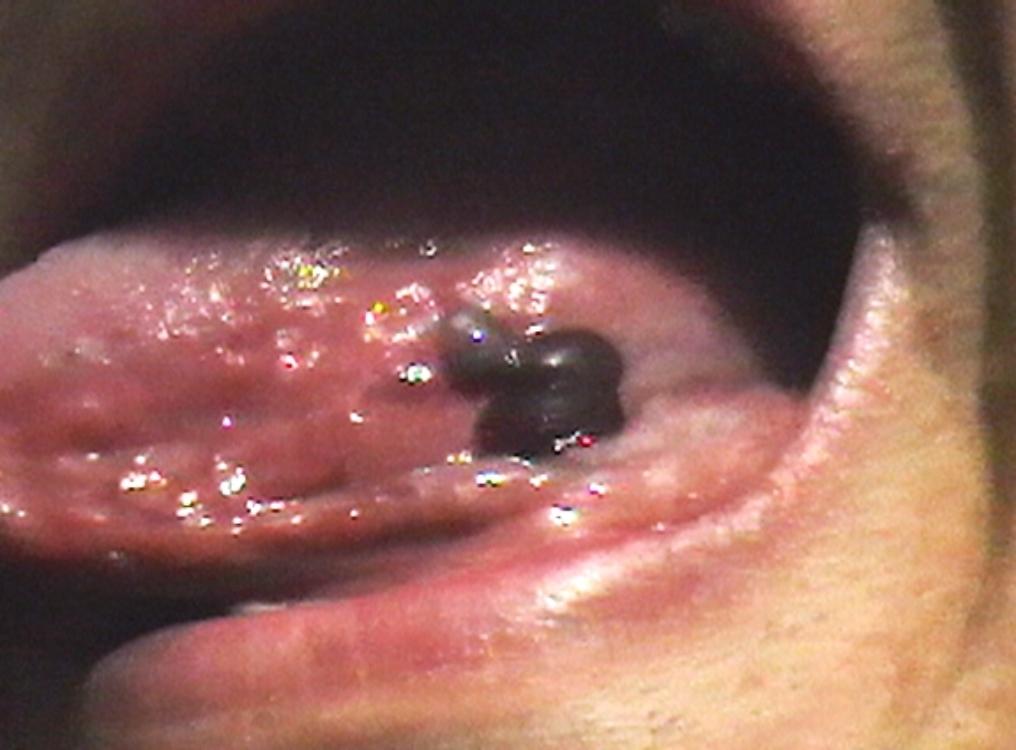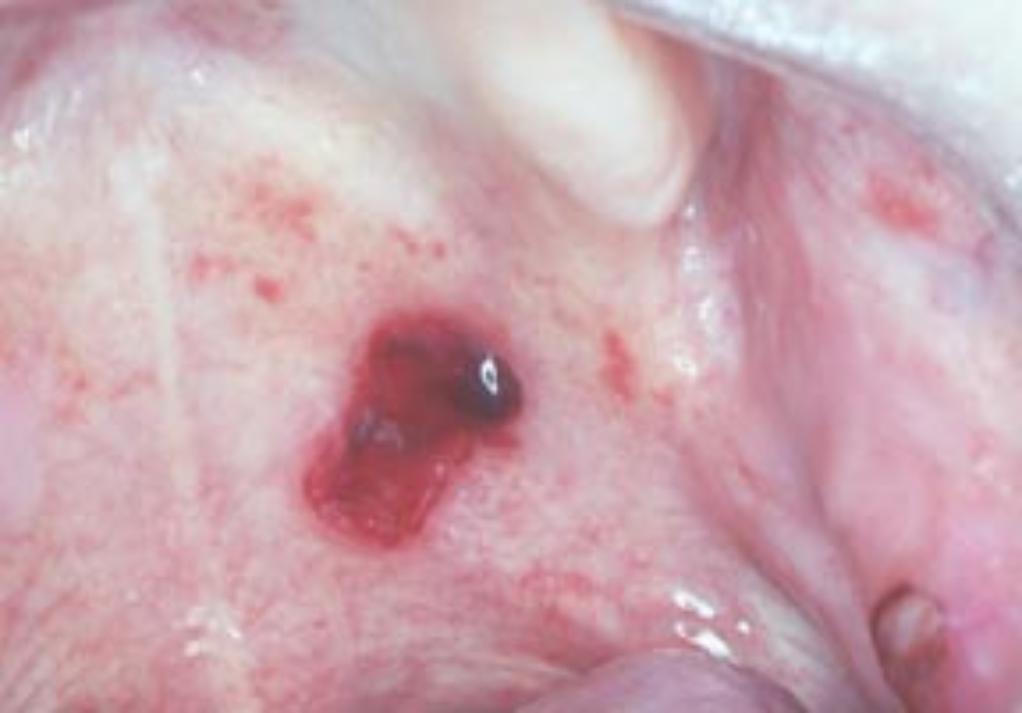Angina Bullosa Hæmorrhagica (Oral Blood Blisters)
Angina Bullosa Hæmorrhagica (Angina ‘choking / strangling’, bullosa ‘a blister’ & hæmorrhagica ‘blood-filled’, initially termed as traumatic oral hæmophlyctenosis) is the term used to describe benign and generally, sub-epithelial oral mucosal blisters filled with blood, which are not attributable to a systemic disorder or hæmostatic defect (clotting disorder).
The blood blisters may be confused with other more serious disorders (e.g., dermatitis herpetiformis, epidermolysis bullosa acquisita, mucous membrane pemphigoid, cicatricial pemphigoid, pemphigoid amyloidosis, sufficient findings to rule out the previously mentioned conditions.
The lesions maybe indistinguishable from blood blisters related to low level of platelets (thrombocytopænia) however blood tests and the absence of areas of bruising (ecchymosis), nose bleeds (epistaxis) or bleeding from the gums are helpful signs to rule it out.
Angina bullosa hæmorrhagica (ABH) is a rare acute and benign blood blistering oral disorder that predominantly affects middle-aged or elderly people (60% of the patients in the range of 45 – 70 years). Both sexes are equally affected.
What are the signs and symptoms of Angina Bullosa Hæmorrhagica (ABH)?
Some patients describe a stinging pain or burning sensation immediately before the appearance of the blood blister. The blisters last only few minutes and then spontaneously rupture, leaving a shallow ulcer that heals without scarring, discomfort, or pain.
Patients do not report a tendency to bleed at other sites.
Family history generally is non-contributory (though there is a suggestion that it can be associated with type II diabetes, hyperglycemia or a family history of diabetes however there is no conclusive evidence of a cause-and-effect relationship between the presence of ABH and glucose metabolism).
Physical:
- The lesions reach an average size of 1 – 3 cm in diameter.
- The soft palate is the most commonly affected site. Occasional lesions have been reported in the buccal
- Approximately one third of the patients exhibit blood blisters in more than one location.
- The oral mucosa attached to bone (ie, ‘masticatory mucosa’ represented by the hard palate and gums) is not affected.
- Similar lesions in other mucous membranes or the skin have not been reported.
- Slightly more than 50% of the cases described are related to the minor trauma of hot foods, restorative dentistry (fillings, crowns etc) or periodontal therapy (treatment of gum disease).
- Other potential causes that have been mentioned in the literature are dental injections of anæsthetics and steroid inhalers.
- A causative factor is not identified in almost 50% of patients.
Investigations:
Lab Studies:
Platelet counts and coagulation tests are within normal limits.
Procedures:
Performing a biopsy of an intact bulla is difficult because of the short duration of the lesion.
Histologic Findings:
The diagnosis is essentially clinical; however, in the cases in which a biopsy has being taken, the microscopic examination reveals a sub-epithelial bulla filled with blood and an underlying mild and non specific mono-nuclear inflammatory cell infiltrate that generally is limited to the region of the lamina propria.
Performing a biopsy of an intact bulla is difficult because of the short duration of the lesion. Otherwise, a biopsy of a ruptured bulla exhibits just a non-specific ulceration. According to Scully et al, direct immuno-staining for immunoglobulin G (IgG), immunoglobulin A (IgA), or C3 consistently are non contributory.
However, laboratory tests are sometimes necessary to rule out any other bullous diseases.
Treatment:
Medical Care:
No treatment is required because the blood blisters spontaneously rupture and heal. Coagulation tests and platelet count may be indicated to rule out a blood dyscrasia.
Prognosis:
ABH is a benign condition.
Useful Articles & Websites
New Zealand Dermatological Society (DermNZ)
BMJ 1997. Oropharyngeal Blood Blisters are known as Angina Bullosa Haemorrhagica
Brit J Anaesth 2004. Angina Bullosa Haemorrhagica presenting as Acute Airway Obstruction
J Oral Science 2008. Angina Bullosa Hemorrhagica of the Soft Palate – A Clinical Study of 16 Cases
Ind J Dermatol Venereol Leprol 2008. Haemorrhagic Blisters in the Mouth
Ind J Dermatol 2012. Angina Bullosa Hemorrhagica – Report of Two Cases
RFO 2012. Angina Bullosa Haemorrhagica (ABH) – Diagnosis & Treatment
RSBO 2012. Angina Bullosa Hemorrhagica – A Rare Condition
BMJ Case Rep 2013. Case Report. Angina Bullosa Haemorrhagica
World J Stomatol 2015. Angina Bullosa Hemorrhagica – An Enigmatic Oral Disease
F1000Research 2017. Case Report. A Rare Cause of Oral Bullae – Angina Bullosa Hemorrhagica
Dental Science 2019. Angina Bullosa Hemorrhagica – Unique Case Report of Blood Blisters


